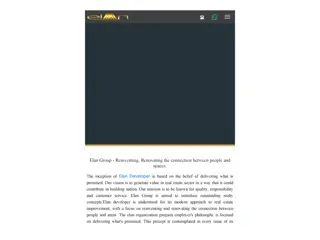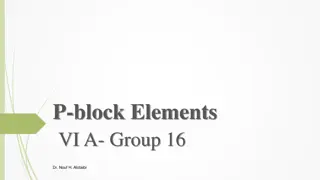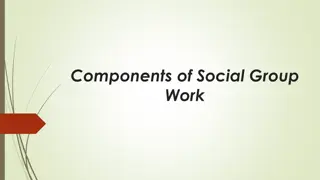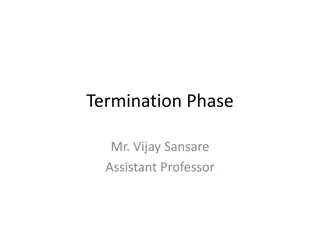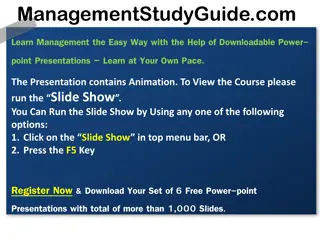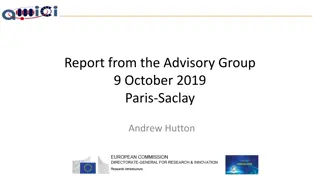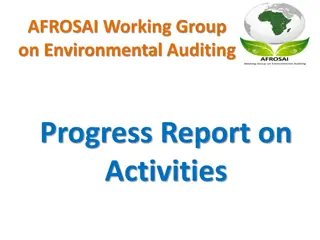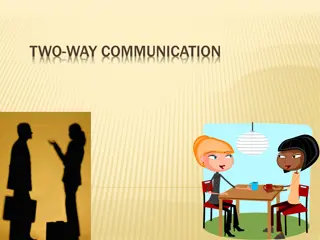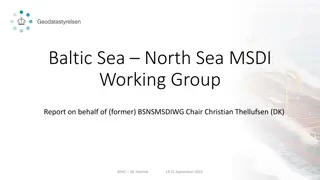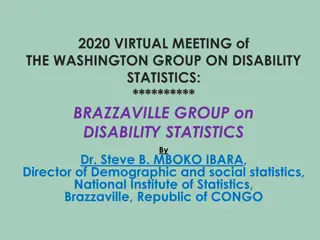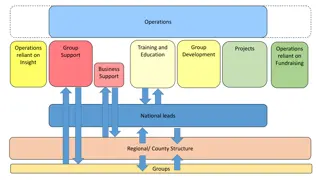MiniGrid Group
This content delves into the requirements, stakeholders, implementation strategies, challenges, and opportunities associated with off-grid electrification through mini-grid plants. Discussions include technical standards, financing components, regulatory issues, and the role of various stakeholders in the electrification process. Recommendations emphasize coordinated governmental efforts, streamlined processes, and the viability of mini-grids in achieving national electrification targets.
Download Presentation

Please find below an Image/Link to download the presentation.
The content on the website is provided AS IS for your information and personal use only. It may not be sold, licensed, or shared on other websites without obtaining consent from the author.If you encounter any issues during the download, it is possible that the publisher has removed the file from their server.
You are allowed to download the files provided on this website for personal or commercial use, subject to the condition that they are used lawfully. All files are the property of their respective owners.
The content on the website is provided AS IS for your information and personal use only. It may not be sold, licensed, or shared on other websites without obtaining consent from the author.
E N D
Presentation Transcript
MiniGrid Group NEP Off Grid Electrification Breakout session
What is required ? 1. What is the Capacity / Size of the minigrid plants allowed to connect to the national ? 2. Technical Standards and Specifications of minigrid ? 3. Licensing Issues BOT ( Build Own Transfer ) , when national grid arrives commercial terms for Minigrid to converge - Differential Tariff. 4. Environmental Clearances and Address Social issues Responsible Organization and monitoring body 5. IPP Investment policy / regulations and facilitation 6. Existing Status - No proper connected minigrid ? No experience in public private connectivity and documentation 2
Who ( Stakeholders ) 1. DRD : Financial Support, Technical ? and administrative support 2. MOEP : Technical Asisstance , Grid Convergence , Project evaluation, Supervisory , Rural electrification act / Minigrid Law - Incentives / off take and facilitation 3. Regional Govt. : Licensing , clearances, Project evaluation, monitoring 4. Private Sectors : Investment, implementation, O&M, Distribution. 5. Financial Institutions and Donors : Loans , Grant, Incentives , Carbon Credits 6. Regulatory organizations - National Electrification Law to appoint a committee / Tariff 7. Development partners Identification / Planning / Report preparation/ Equipments / Implementation 8. End Users / Off taker 9. Technical Training Institutes / Universities / Polytechnics / Consultants 3
How ? 1. Grid Code is required asap 2. For Financing Component - Long term Loan , Grant , Subsidy , Incentives Carbon Credits , RE certificates Setting up and Strengthening of finacial Institutions including local banks for financing 3. Establishment of Dedicated Institution for development of RE , Minigrd and Grid Connectivity including selling excess power to grid 4. Intensive Capacity Building at Govt , FI , Manufacturers , private developers , NGOs 5. Develop sustainable and encouraging feed in tariff 6. Strong Coordination among different players 4
Opportunity , Challenges , Recommendations & Conclusion 1. Opportunities 1. Over 7 million HH to electrify - How many through Mini grid 2. Immense unexploited potential for mini grids 3. Facilitation of SME growth and regional development 2. Challenges 1. Land Acquisitions 2. Mini grids / Laws 3. Implementation / Know how 4. Finance disbursement during project phases 3. Recommendations 1. Coordinated Govt. 2. One Stop Shop / Single Window 3. Minigrid / Rural Electrification Act 4. Conclusion Minigrid is a Viable / Realistic solution to achieve 2030 target of NEP 5










